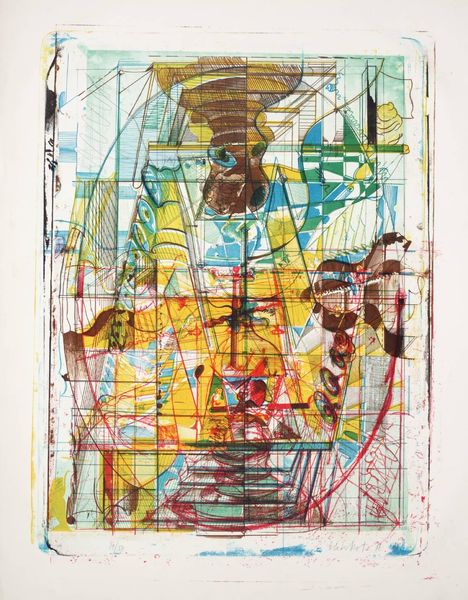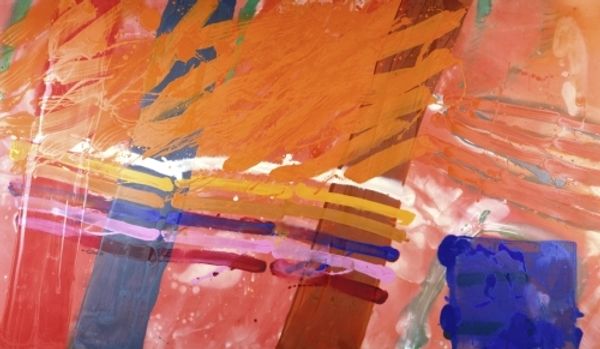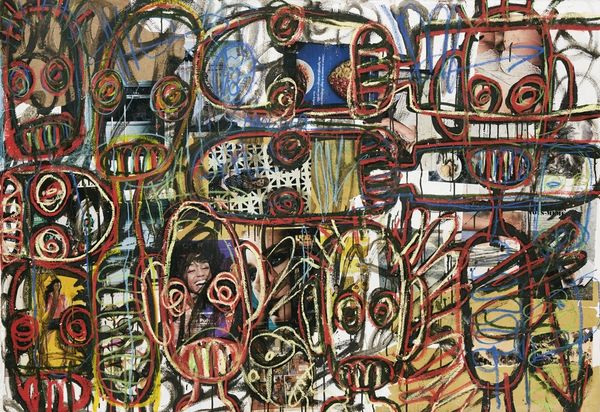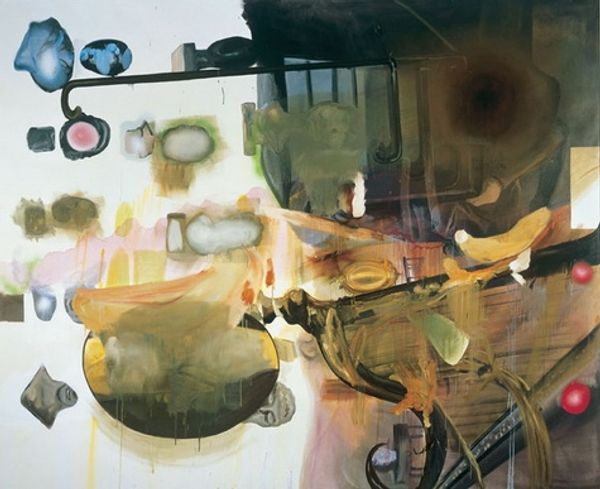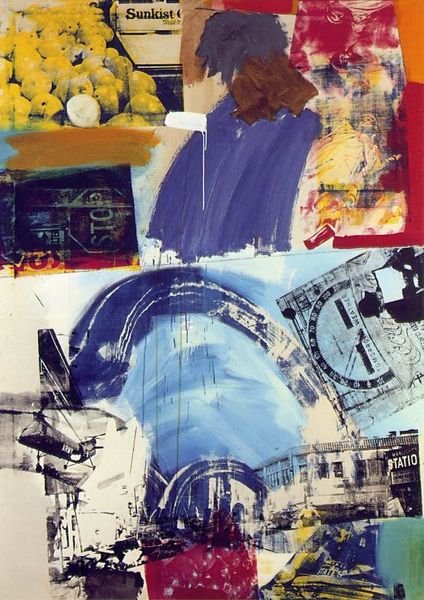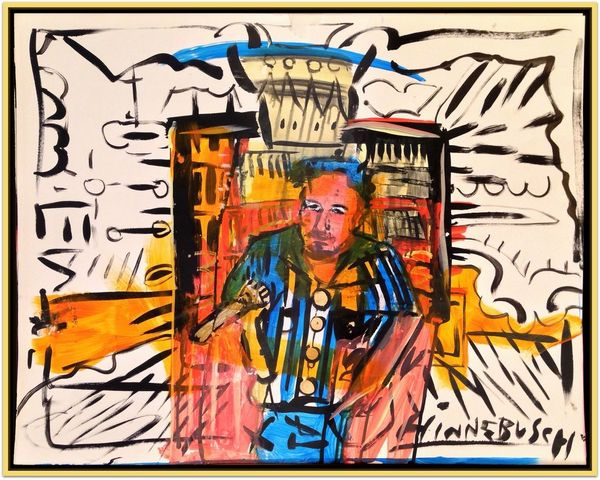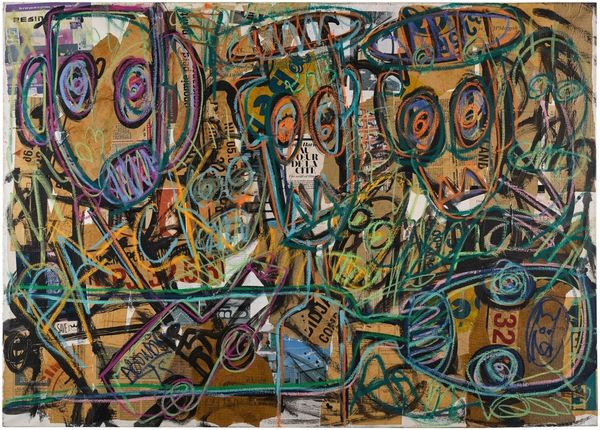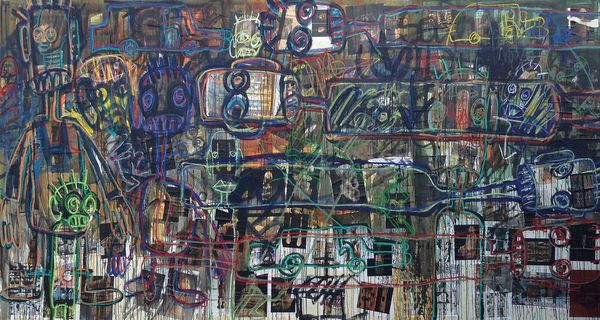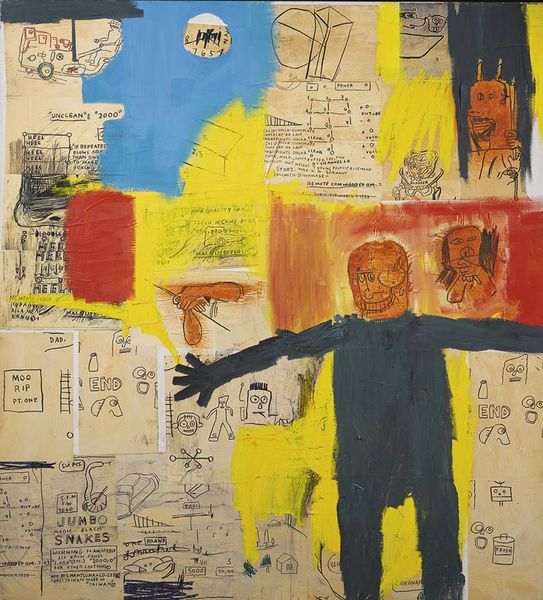
painting, watercolor, ink
#
portrait
#
contemporary
#
ink painting
#
painting
#
figuration
#
watercolor
#
ink
#
pop-art
#
cityscape
Copyright: Modern Artists: Artvee
Editor: This watercolor and ink work is titled "The Night the Roxy Opened," created in 1961 by Andy Warhol. I’m struck by how it feels both detailed and dreamlike, like a memory fading at the edges. What kind of visual story do you think Warhol is telling? Curator: Look at the repetition of the architectural forms—arches, columns, ornate details—they create a sense of grandeur, almost overwhelming the human figures below. This use of architectural elements, repeated like a motif, hints at the power and cultural weight that places like the Roxy held. Do you see how the colors, though vibrant, are somewhat diluted? Editor: Yes, they’re almost transparent. Is he deliberately creating that faded feeling? Curator: I think so. Consider the "Roxy" as a symbol itself. It was more than just a cinema; it was a monument to escapism, a shared cultural space. Warhol’s loose application of watercolor may be an attempt to capture the ephemeral nature of memory and experience, but also its allure and importance. Notice, too, the repetitive pattern details in the theatre's architecture. Does it remind you of anything? Editor: It's interesting, they’re positioned a bit like the repeating images of commercial products or celebrities in some of his other works... so maybe he's using the Roxy itself to symbolize something about popular culture? Curator: Exactly. By portraying the Roxy, Warhol taps into the collective memory and the burgeoning consumer culture of the 1960s. Editor: I hadn't thought of it that way, but the idea of the theatre as a cultural symbol really changes my perspective on the piece. Curator: It’s a powerful reminder of how deeply ingrained symbols can be, shaping our perceptions and memories of shared experiences.
Comments
No comments
Be the first to comment and join the conversation on the ultimate creative platform.


